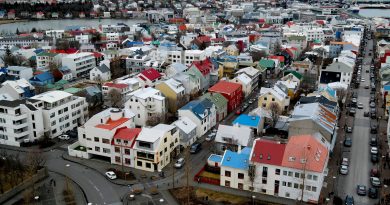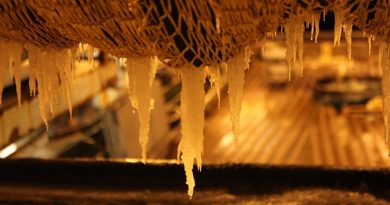Missing sea ice data found in crusty Canadian algae
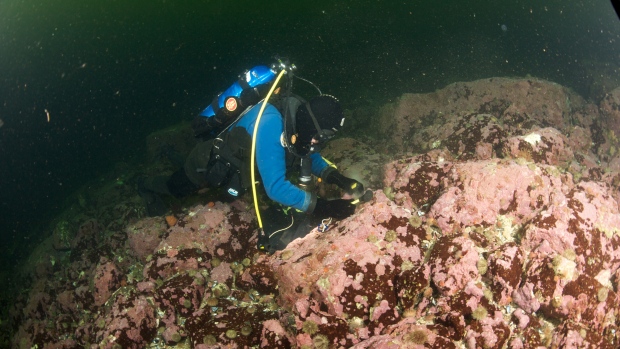
For the first time, scientists have been able to piece together how much sea ice covered the Arctic each winter before satellites began tracking sea ice in 1979, filling a gap in data about how the Arctic climate has changed in the past few hundred years.
In a paper published this week in Proceedings of the National Academy of Sciences, the Canadian-led research team showed the sea ice cover in the Arctic has declined dramatically over the past 150 years, not just over the past 30.
The study was able to extend the record of sea ice coverage in the Arctic more than 600 years into the past with the help of an unusual, long-lived rock-like organism called coralline algae.
By reading the algae’s growth layers like tree rings and comparing them to satellite data, the team led by Jochen Halfar, a professor of chemical and physical sciences at the University of Toronto Mississauga, was able to figure
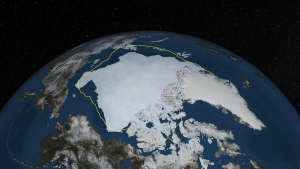
out how long ice covered the sea where the algae lived during each year of its 646-year life span.
That kind of data, unavailable up until now, can be used to update climate models “to predict what is going to happen in the next 100 years or so,” said Halfar in an interview Monday from Germany.
Good records of sea ice cover only exist since 1979, when sea ice started being tracked by satellite imagery. According to the U.S. National Snow and Ice Data Center, satellite data show that sea ice cover in the Arctic has been shrinking 63,400 square kilometres per year or 7.1 per cent per decade. The decline is linked to an increase in vegetation growth and warmer temperatures in the Arctic, which has been warming far more quickly than the global average.
In order to estimate what sea ice cover was like before 1979, Halfar said, researchers had been relying on historical reports by fishermen, which are limited; and on data from sea sediment cores, which can only provide information on much longer time scales, such as how sea ice cover changed from century to century over 10,000 years.
Now, by studying a 646-year-old coralline algae specimen off Kingitok Island in Labrador, researchers have been able to get unprecedented detail about variations in sea ice over the past few centuries.
Have you seen coralline algae?
Unlike the slimy, green, floating algae that most of us are familiar with, coralline algae is a pinkish organism with a hard skeleton, like coral, that forms hard crusts on rocks on the sea bottom in coastal areas.
While most of us have never heard of it, coralline algae is common all over the world, and anyone who has ever snorkelled in a tropical coral reef has probably seen it, Halfar said.
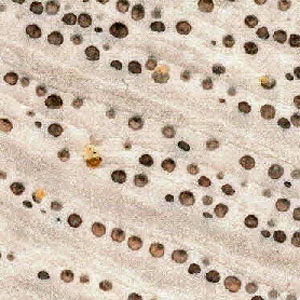
“They’re not as sexy as coral,” he acknowledged, since they don’t grow as tall. Instead, they form dark red, purplish crusts at the base of the corals, cementing the reef together.
“The coral reef would be much more fragile and susceptible to breakage from storms, for example, if it wasn’t for the coralline algae,” Halfar added.
While studying coralline algae in Mexico years ago, Halfar broke some open, saw the growth layers, and wondered if those contained annual, historical data about climate the way tree rings do.
It turns out they do, and that long-lived Arctic and sub-Arctic specimens, such as ones chiselled and jackhammered out from the sea floor off the Labrador coast and in Arctic Bay, Nunavut, provide particularly useful climate data.
Like plants and other algae, coralline algae use light from the sun to nourish it via the process of photosynthesis. When the sea ice forms, it blocks that light, causing the algae to stop growing until the ice melts again. The alternating growing and non-growing seasons are visible as tree-ring-like stripes. They are also visible chemically as variations in levels of magnesium, which is taken in by the algae as it grows and can be used to measure growth more precisely.
Halfar and his colleagues compared the growth of algae to satellite data and found a good correlation between its growth and sea ice cover for the past 30 years. They then used that correlation to extrapolate sea ice cover each winter over the course of the algae’s lifetime.
Hazardous work
Besides showing the overall decline in sea ice over the past 150 years, the data also showed that sea ice goes through cycles of increases and decreases on the scale of a decade or a few decades. It also showed that there was a lot more ice in the Arctic during the Little Ice Age, a period of global cooling from the mid-1500s to the mid-1800s. That might be expected, but it conflicts with scientific analyses based on indirect evidence, such as the growth of tree rings on nearby land masses. That suggests that such indirect evidence may not be reliable.
Halfar said collecting data from the algae wasn’t easy. For one thing, it required him and his colleagues to do a lot of diving in sometime icy cold waters: “That’s obviously not very pleasant.”
It could also be hazardous at times.
Once, one of his colleagues was diving in murky waters when an 800 kilogram sea lion, drawn by the curious sound of the divers’ jackhammers, appeared out of nowhere and began charging at his head with its toothy mouth wide open.
Another time, off the coast of Newfoundland, Halfar noticed that the rock he was chiselling was unusually rectangular.
“Turned out it was a box of ammunition covered in coralline algae.”
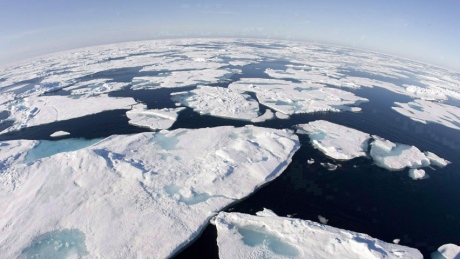
Related Links:

